CALL US: (260) 212-1901
Q & A
CALL US: (260) 212-1900
Frequently Asked Questions
What is DirectClinic?
DirectClinic is an innovative approach to healthcare delivery that offers a unique payment model for outpatient care. Employers can offer it to their employees to supplement their insurance plans and fund primary care directly. The overall goal is to reduce the wasted overhead costs of delivering healthcare, like insurance premiums, billing processes and administrative costs. The defining core of DirectClinic is that there should be a trusting relationship between patients and their doctors. Additionally, each scheduled visit will allow enough time for the patient to discuss all their concerns, thus providing an environment for enhanced patient/physician communication.
Why DirectClinic?
The goal of DirectClinic is to give patients affordable options when it comes to high-quality medical care. Through personal partnerships between patients and their doctors, better health can be achieved, and doctors can practice medicine the way they were taught without being controlled by the high costs of insurance and treatments.
Is DirectClinic insurance?
No, DirectClinic is not insurance. In fact, DirectClinic primary care providers do not accept insurance. We work with patients directly in order to offer them high-quality primary care services. Specialist and emergency care is not offered through DirectClinic, but we are able to refer our patients to providers within their existing health plan networks.
Why doesn't DirectClinic accept health insurance?
One of the primary goals of the DirectClinic model is to reduce the reliance on insurance for routine health needs. Insurance was designed to be used for emergencies, not for every single doctor visits. By eliminating complex billing process, like coding, unnecessary documentation procedures and co-pay processing, we are able to offer primary care much more efficiently and affordably.
Can DirectClinic be integrated with existing insurance plans?
Yes, it can, and that is exactly why it was designed. DirectClinic should be used as a supplement to your existing health insurance plan. Through the combination of the two, patients can save upwards of 20 percent on their overall healthcare costs.
Are family members covered too?
Yes, spouses, domestic partners and children aged 2-26 may be added to your DirectClinic coverage. Children are not eligible on their own and must be listed under a qualified adult member.
Do I still need traditional health insurance coverage?
Yes, we recommend that you still maintain traditional insurance coverage to cover hospitalizations, emergency room visits, specialists visits, and other catastrophic events. DirectClinic is designed for the delivery of primary care services only.
What is the problem with America's current healthcare system?
America’s healthcare system is broken. The average primary care provider must maintain at least 3,000 active patients just to make ends meet. Approximately 40 cents of every dollar goes towards covering insurance-related overhead costs. When combined with consistently rising healthcare costs, the growth is unsustainable. Furthermore, about 30 percent of healthcare costs go towards unnecessary services that are entirely avoidable.
Does DirectClinic partner with hospitals if hospitalization is necessary?
DirectClinic operates independently of the local hospitals in an effort to reduce wasted overhead and the overly intrusive regulations and paperwork. However, we do have solid working relationships with many hospitals. If needed, we can refer you to your facility of choice based on your insurance coverage. In the event that you do need to be admitted to the hospital, we work closely with the doctors and specialists there to ensure that you are provided with exemplary care.
Does DirectClinic comply with the requirements of the Affordable Care Act? What about catastrophic coverage?
The DirectClinic model is not insurance, so it does not qualify under the Affordable Care Act. If you have catastrophic insurance coverage, it may or may not qualify, depending on the specifications of your plan.
Do I need to sign up for DirectClinic during a specified open enrollment period?
No, DirectClinic accepts new patients at any time throughout the year.
Is DirectClinic available to union members?
Yes, DirectClinic is proud to work with unions, union employers and the benefit plans that they offer.
Will I need to sign a long-term contract?
Absolutely not! Our memberships can be billed monthly, quarterly or annually. You are able to cancel your service at any time. However, if you cancel your plan, you will need to pay a $200 fee to re-enroll.
Does DirectClinic accept Medicare or Medicaid?
No, we are not able to accept Medicare or Medicaid at this time.
Will I need to pay any administration or other fees?
No, we do not charge any hidden fees. The only fee you will ever have to pay is the re-enrollment fee, and that will only be charged if you cancel your membership and then decide to re-enroll. First- time members do not have to pay any enrollment fees.
Can I pay my monthly fee from my Health Savings Account (HSA)?
Yes and no. You are not able to take the monthly fee directly from your HSA, but we can give you a receipt for any service in our office, including the fee. This amount can then be deducted from your HSA. We are currently in the process of working with the IRS to change the rules to allow your fees to be deducted directly.
Does my monthly fee include lab or imaging services? Will there be an additional charge for these services? Can I have the service done at an independent facility that is approved under my insurance plan?
We are able to offer point-of- care lab or imaging services to our members at significantly discounted rates. Our members can take advantage of our low pricing and state-of- the-art equipment. We will give you a detailed breakdown of the costs involved before beginning any lab or imaging procedure. If you would prefer to go through a provider that is covered under your comprehensive insurance plan, we can make arrangements for you to have your lab and/or imaging services done at a facility of your choosing. If you have any questions about which option is best for your situation, we will be happy to discuss your options with you to help you to make an informed decision.
Content, including images, displayed on this website is protected by copyright laws. Downloading, republication, retransmission or reproduction of content on this website is strictly prohibited. Terms of Use
| Privacy Policy


